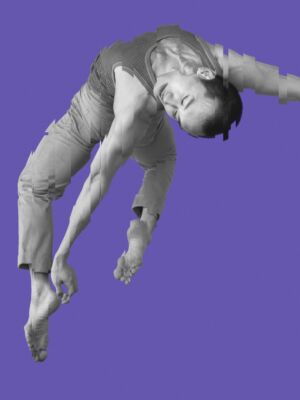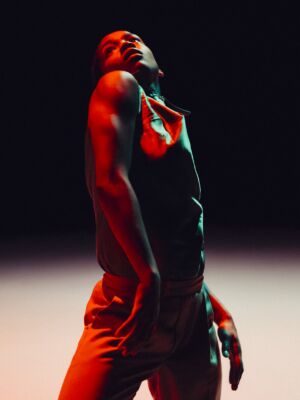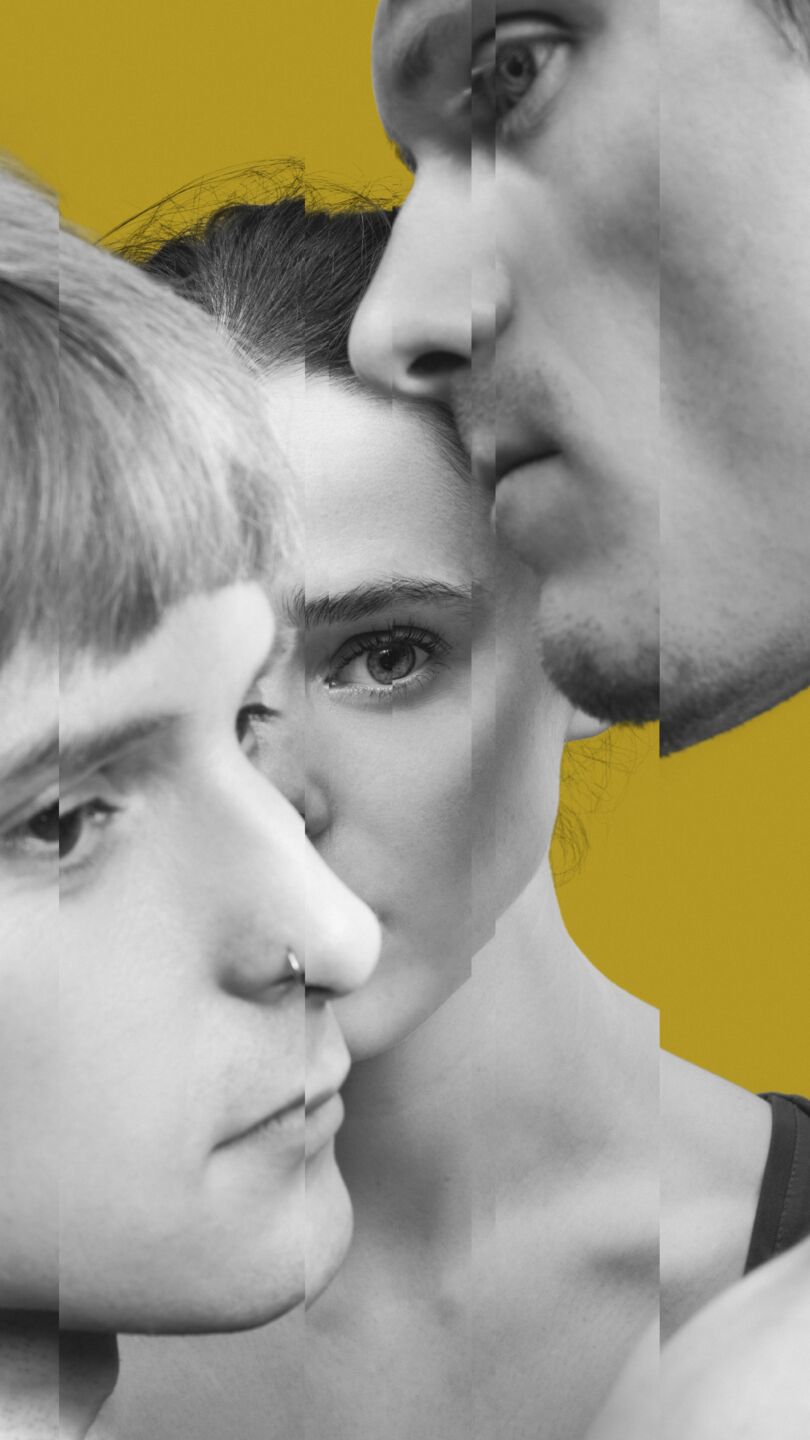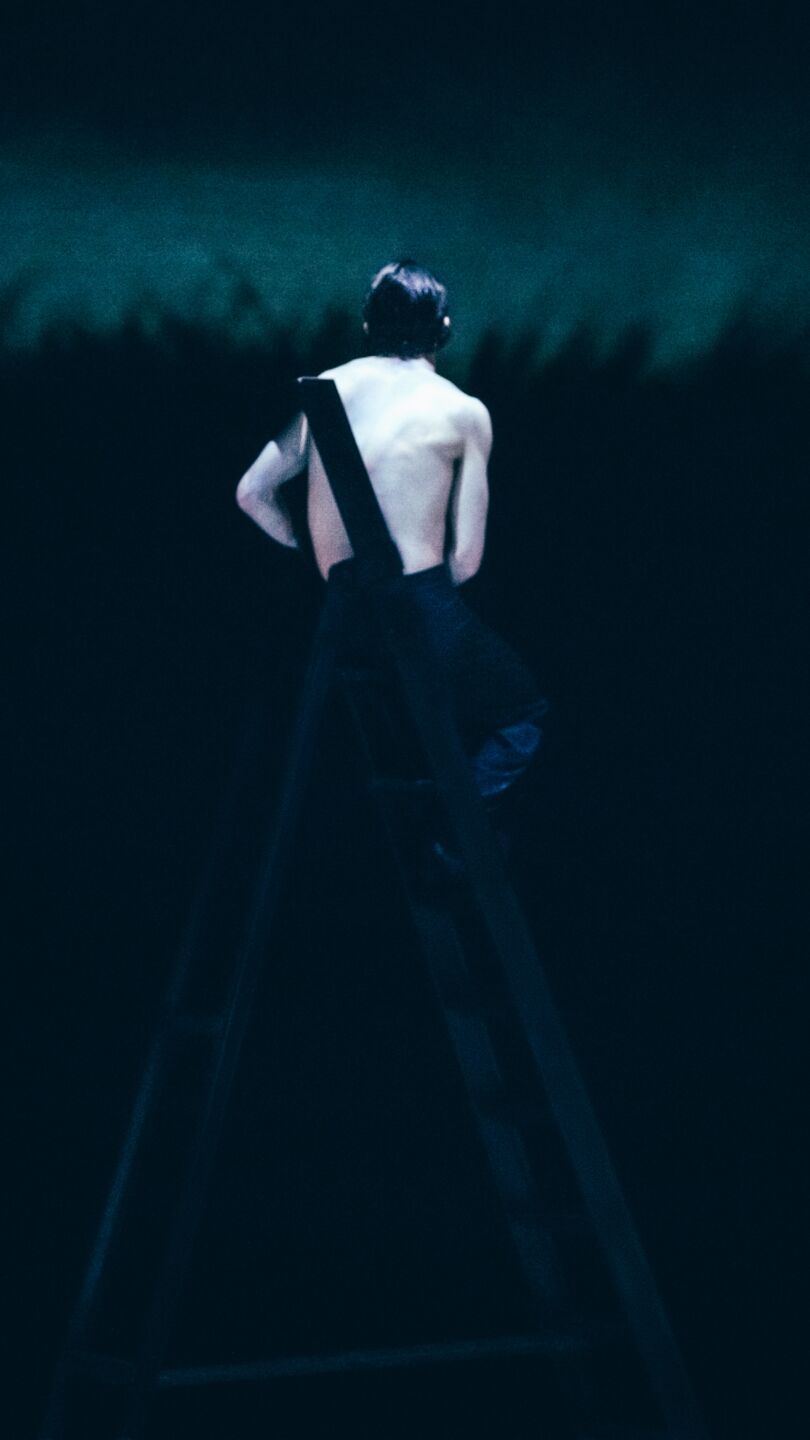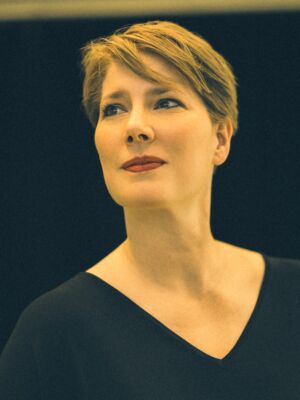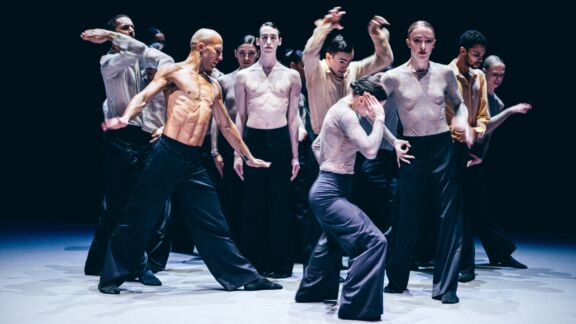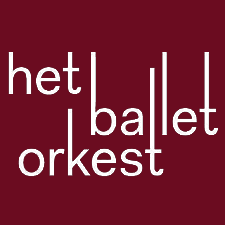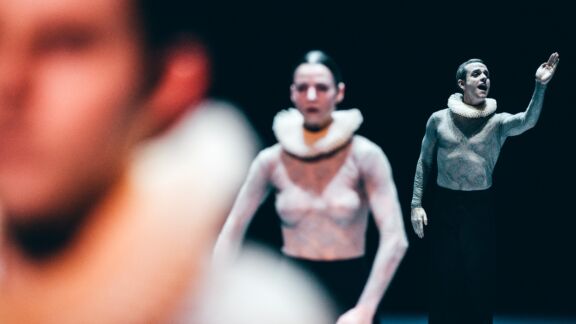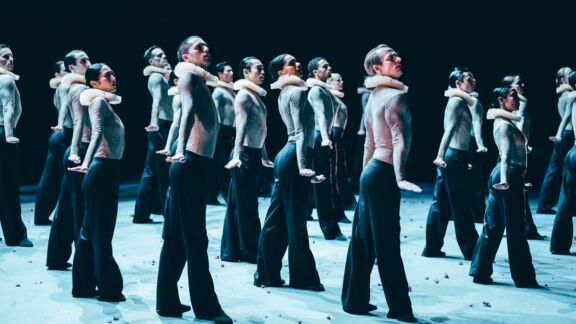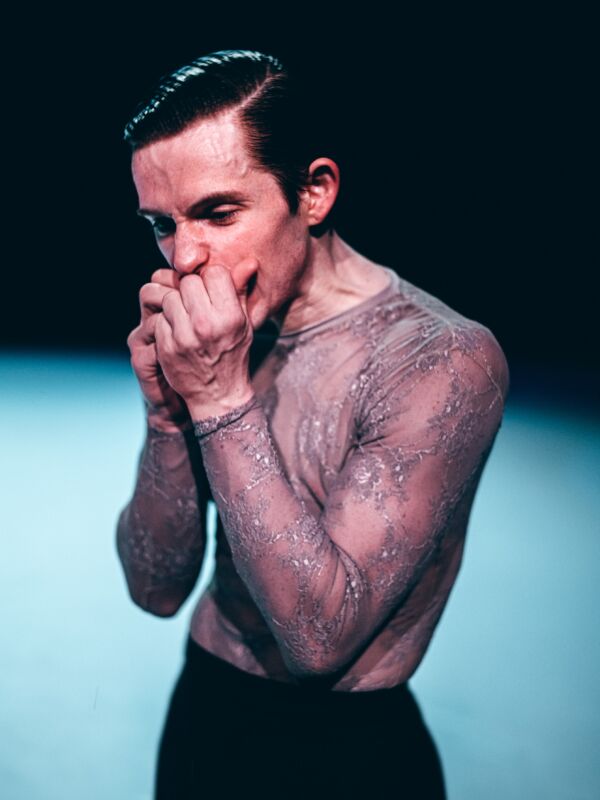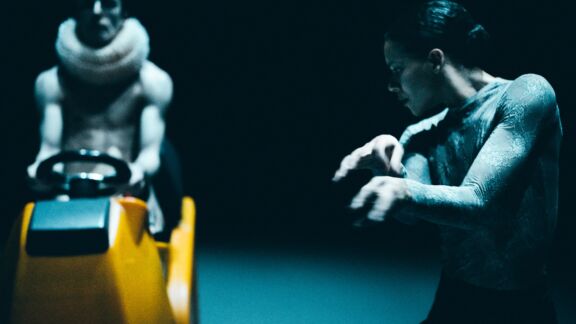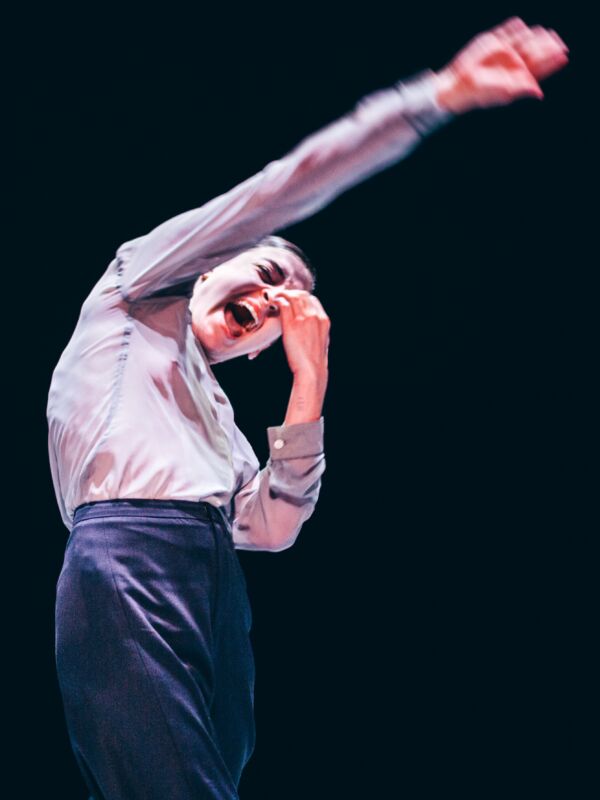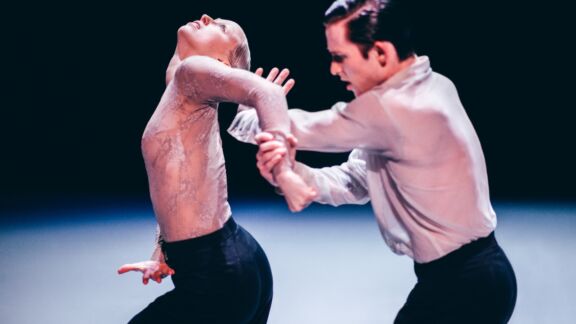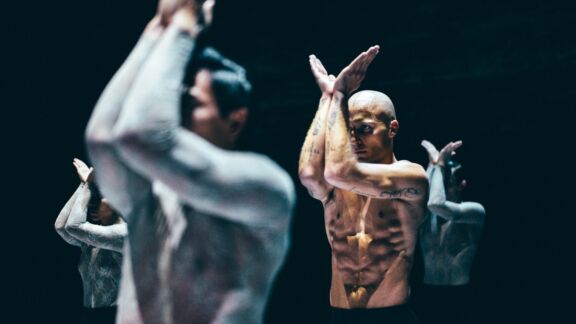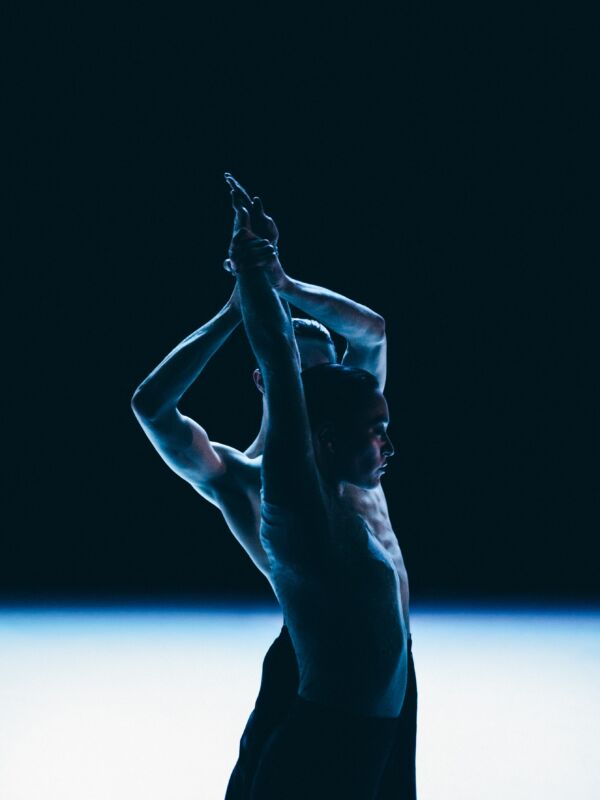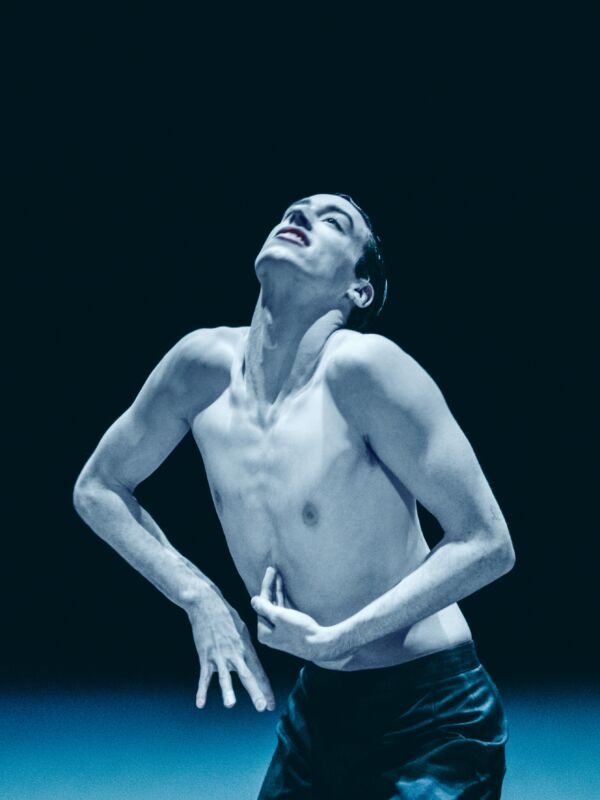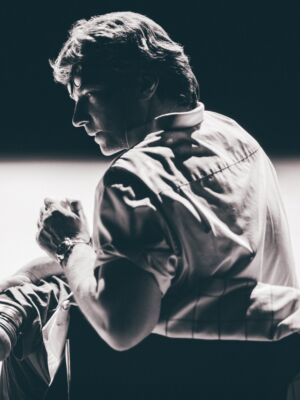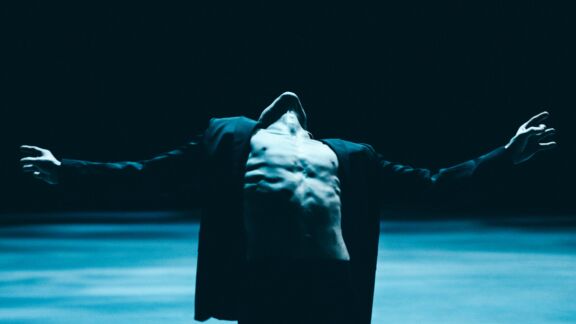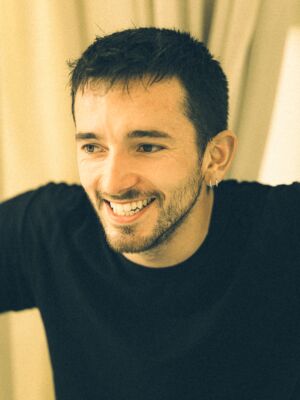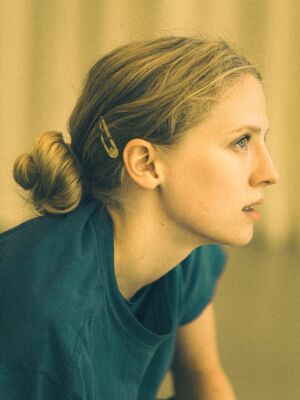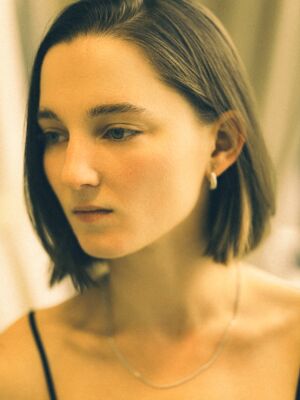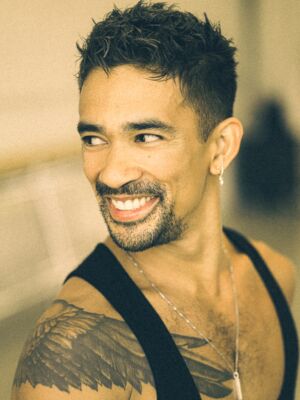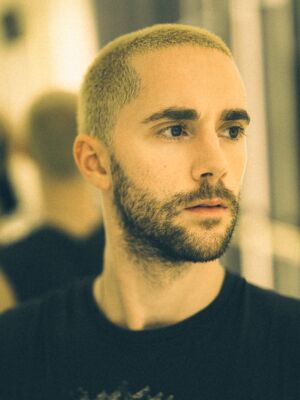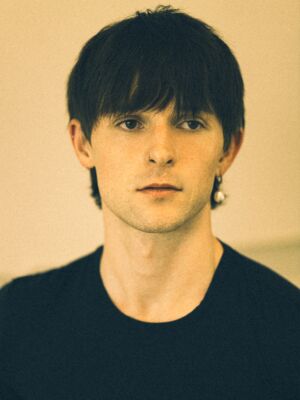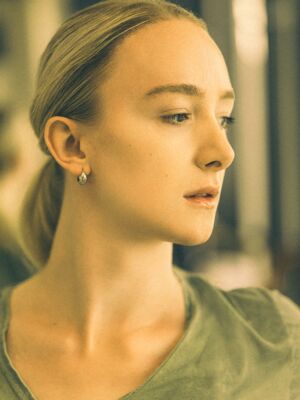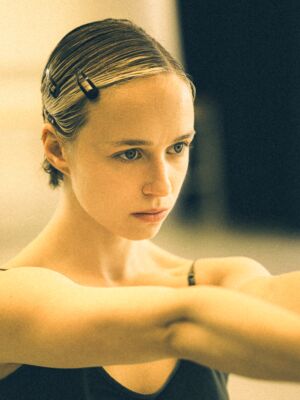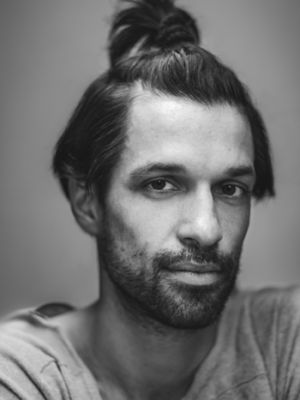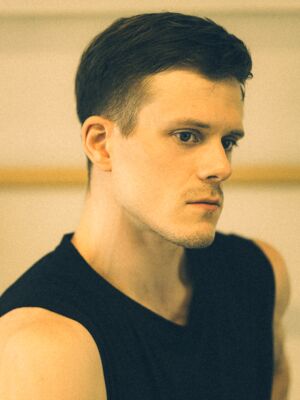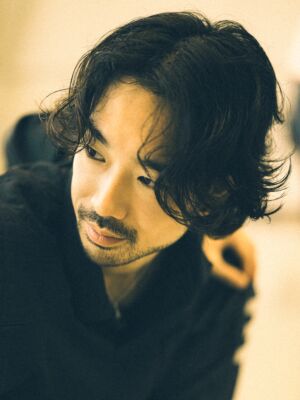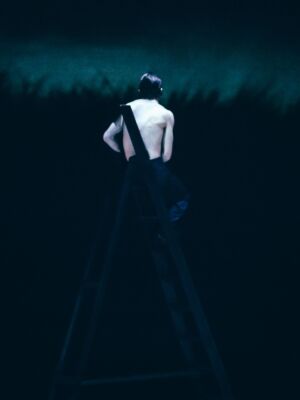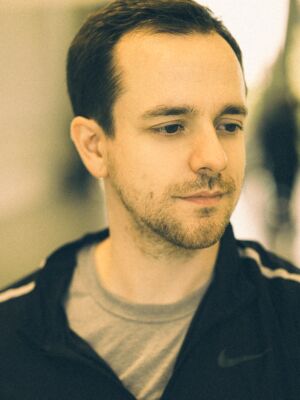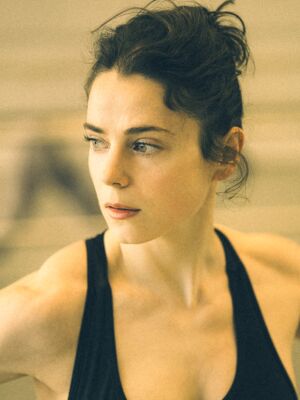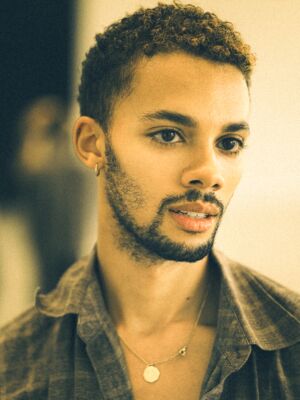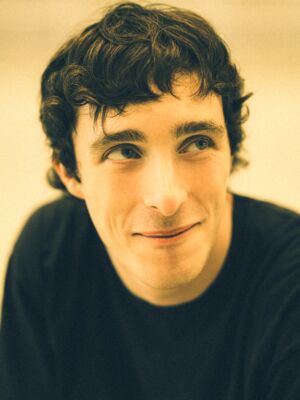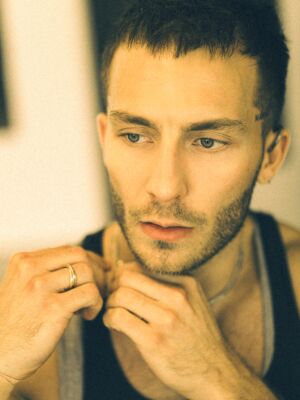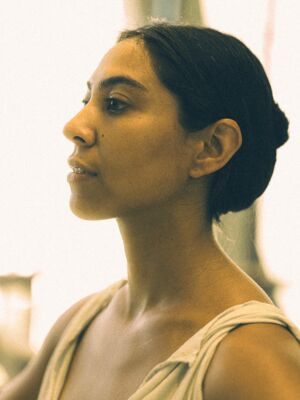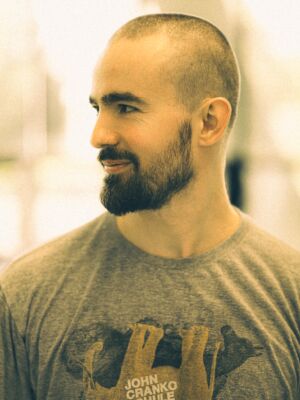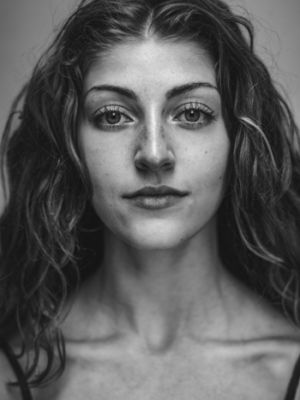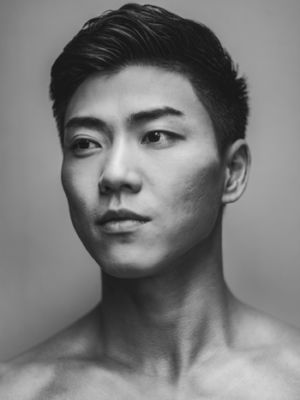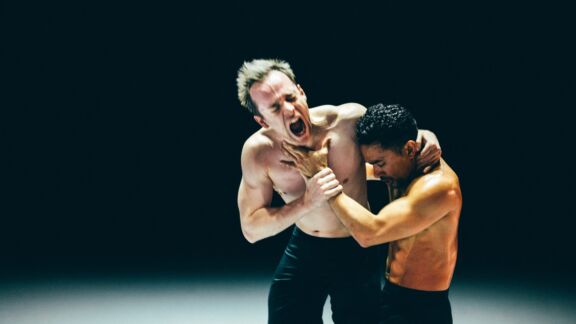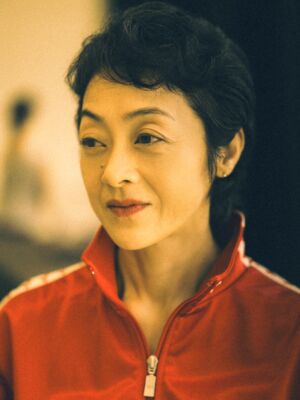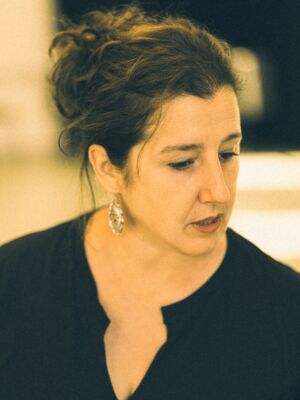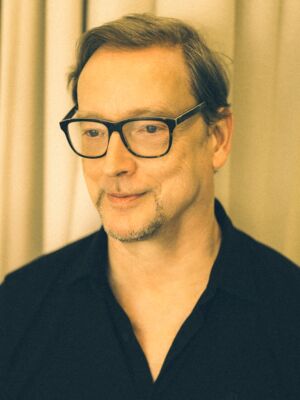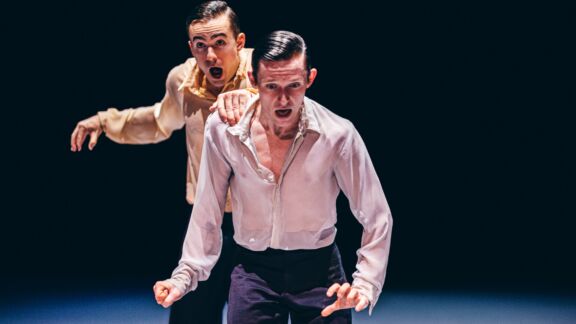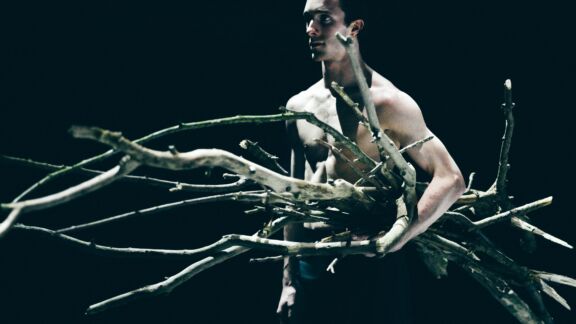In The Dutch Mountains is Marco Goecke’s new world premiere for NDT, a title some may recognize from the song by the Dutch band Nits, and others from Cees Nooteboom’s novel of the same name. Goecke moved to the Netherlands when he was 17, where he lived for two years. He has created at least one choreography here every year since 2006. In that sense, you could almost call him a Dutch choreographer. In the Dutch Mountains is both a tribute to this country and a retrospective of his previous work.
“The choice of the title has little bit to do with the song I used to listen to,” Goecke says, when asked about the reason for the title of this work. “When I was young, I used to get heart palpitations when I heard a phrase I didn’t quite understand.” And really, there is something enigmatic about the combination of ‘the Netherlands’ with the idea of ‘mountains.’ The expression comes close to being an oxymoron, its components in stark contrast. What does a country, as Willem Frederik Hermans writes in his novel Beyond Sleep, that “actually belongs to the fish”[1] have to do with mountains? And “where is the natural familiarity with the great questions and their deep penetration when someone is educated in a flat little country of mud and clay, without a single mountain?[2]”
Even if one leaves these big questions for what they are, the puzzle still tempts one to search for connecting elements. Extremes, such as those evoked by the virtual juxtaposition of mountains and dikes, are certainly to be found in Dutch nature: the strong sea winds, thunderstorms, the dramatic sky, the sea with its tides and wave crests. A landscape that never stands still, is always in motion, demands or threatens movement, and which, in order to live with it, makes the interaction of people as necessary as in few other places on the planet. Movement, as it could also be driven out by the extreme tension inherent in the combination of mountains and seascape.
Indeed, this work – like all of Goecke’s works – is about pure movement and the encounter with and between the dancers. In the music of Bartok (Concerto for Orchestra) and Brahms (3rd Symphony), performed live by the Dutch Ballet Orchestra*, Goecke weaves in two songs by This Mortal Coil that have a close connection to the sea and nature: Song to the Siren and Nature’s Way. In the first song, a passage reads “I’m as riddled as the tide.” The movement of water, its contrast with the immovability of imaginary mountains, the transformation of this tension into the movement of dance – Goecke reformulates the riddle without pretending to be able to solve it, and finally moves it to the interior of the theater: “For me the real Dutch mountain is theatre. The stage floor, that’s the ‘Dutch Mountain’ that you always have to climb when you make a work.”
– Nadja Kadel
[1] Paraphrased from the original quote: “…een stuk grond dat eigenlijk aan de vissen toebehoort” from: W.F. Hermans, Nooit meer slapen, Amsterdam: De Bezige Bij 1966, p. 19.
[2] Paraphrased from the original quote: “…En “waar blijven het diepe inzicht en de natuurlijke vertrouwdheid met de grote problemen, als iemand zijn opleiding krijgt in een laag landje van modder en klei, zonder één berg?” from: W.F. Hermans, Nooit meer slapen, Amsterdam: De Bezige Bij 1966, p. 18.
*Performances in Amare, The Hague only
